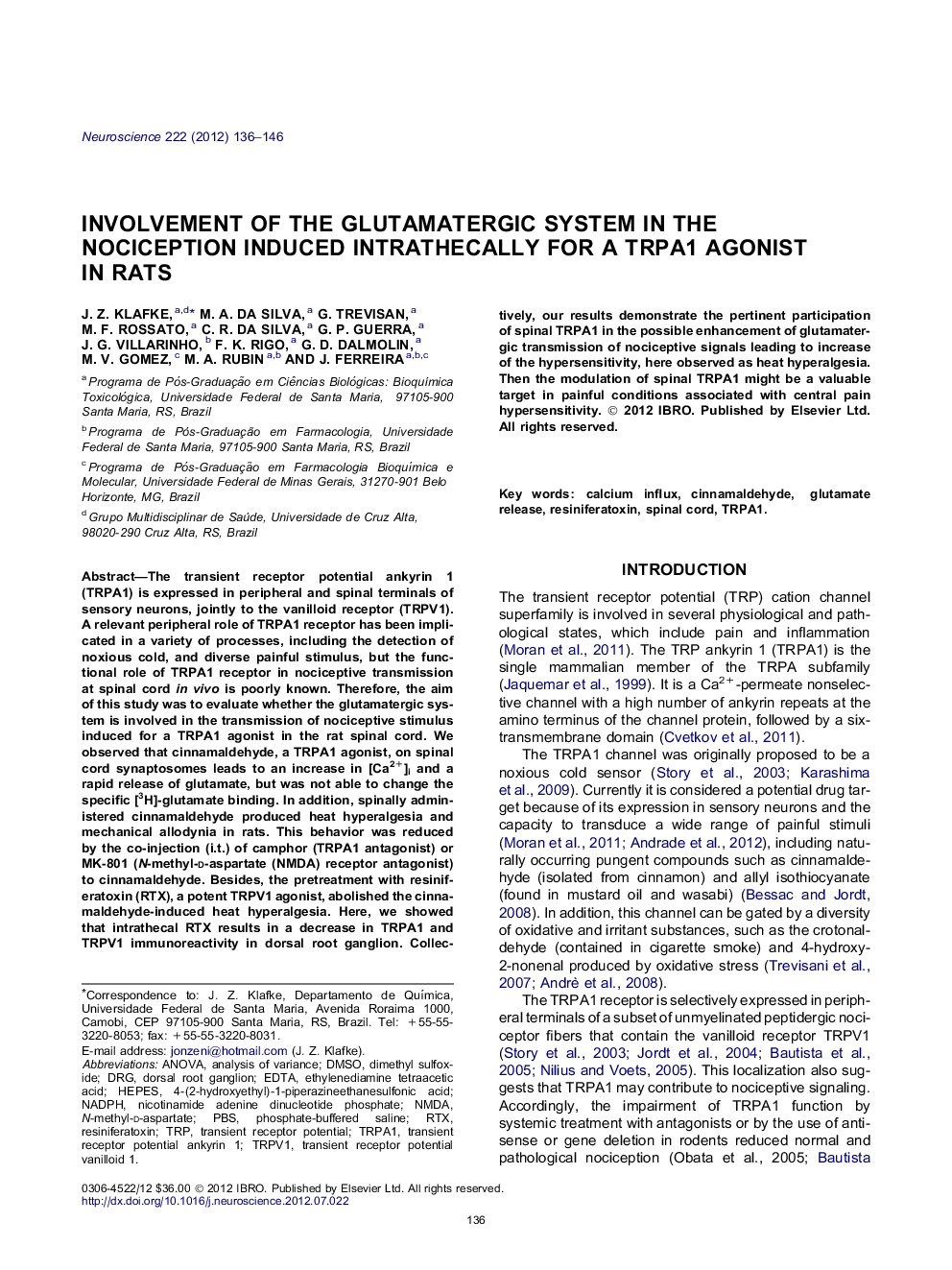| Article ID | Journal | Published Year | Pages | File Type |
|---|---|---|---|---|
| 4338293 | Neuroscience | 2012 | 11 Pages |
The transient receptor potential ankyrin 1 (TRPA1) is expressed in peripheral and spinal terminals of sensory neurons, jointly to the vanilloid receptor (TRPV1). A relevant peripheral role of TRPA1 receptor has been implicated in a variety of processes, including the detection of noxious cold, and diverse painful stimulus, but the functional role of TRPA1 receptor in nociceptive transmission at spinal cord in vivo is poorly known. Therefore, the aim of this study was to evaluate whether the glutamatergic system is involved in the transmission of nociceptive stimulus induced for a TRPA1 agonist in the rat spinal cord. We observed that cinnamaldehyde, a TRPA1 agonist, on spinal cord synaptosomes leads to an increase in [Ca2+]i and a rapid release of glutamate, but was not able to change the specific [3H]-glutamate binding. In addition, spinally administered cinnamaldehyde produced heat hyperalgesia and mechanical allodynia in rats. This behavior was reduced by the co-injection (i.t.) of camphor (TRPA1 antagonist) or MK-801 (N-methyl-d-aspartate (NMDA) receptor antagonist) to cinnamaldehyde. Besides, the pretreatment with resiniferatoxin (RTX), a potent TRPV1 agonist, abolished the cinnamaldehyde-induced heat hyperalgesia. Here, we showed that intrathecal RTX results in a decrease in TRPA1 and TRPV1 immunoreactivity in dorsal root ganglion. Collectively, our results demonstrate the pertinent participation of spinal TRPA1 in the possible enhancement of glutamatergic transmission of nociceptive signals leading to increase of the hypersensitivity, here observed as heat hyperalgesia. Then the modulation of spinal TRPA1 might be a valuable target in painful conditions associated with central pain hypersensitivity.
► Cinnamaldehyde modulates the nociceptive transmission in the spinal cord via TRPA1. ► The cinnamaldehyde-induced hyperalgesia is mediated by the glutamatergic signaling. ► TRPA1 present on spinal cord play a modulatory role in nociceptive transmission.
